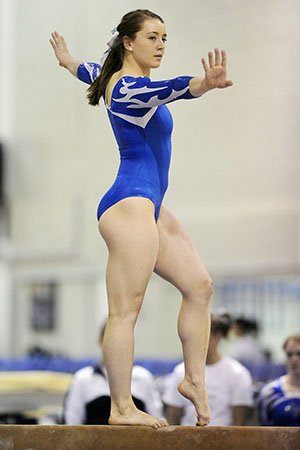nalco group
bone, muscle & joint pain physio
BOOK NOW / WHATSAPP ABOUT YOUR PAIN OR INJURY
- NOVENA 10 Sinaran Drive, Novena Medical Center #10-09, Singapore 307506
- TAMPINES 9 Tampines Grande #01-20 Singapore 528735
- SERANGOON 265 Serangoon Central Drive #04-269 Singapore 550265
Home > Blog > Physiotherapy > Conditions > Female Athlete Triad Physiotherapy
Female Athlete Triad Physiotherapy

Female athlete triad (triad) refers to a medical syndrome that can manifest across a broad spectrum, but involves the interrelationship between 3 measurable factors:
- how much energy a woman has available to use for activity (energy availability)
- the quality and strength of her bones (bone mineral density)
- her menstrual cycle
Clinically, imbalances in any one of these areas can lead to
- eating problems
- osteopenia
- osteoporosis and/or
- menstrual dysfunction
The prevalence of all 3 components of female athlete triad among high school, collegiate, and elite athletes in the United States can be as high as 16%; the prevalence of any one component of the triad in this population can be as high as 60%.
first of all, What is Female Athlete Triad?
Female athlete triad is a medical syndrome that can involve both the physical and mental aspects of health. Typically develops in female athletes based on 3 factors: energy availability, bone mineral density, and the menstrual cycle.
1) Energy availability is calculated by how much energy you gain from dietary sources, minus the amount of energy you expend during activity. Typically, with triad poor energy availability is the driving force behind abnormal bone density and menstrual dysfunction.
Poor energy availability is caused by poor nutrition; it can occur with or even without the presence of an eating disorder. Nutrients act to provide the necessary source of fuel for bones and muscles.
Poor nutrition also can have a negative effect on the part of the brain that controls hormones that regulate the menstrual cycle. Optimal energy availability supports bone health specifically by maintaining estrogen levels.
Estrogen is an important hormone that has a protective effect on bone by supporting the balance between bone building and bone loss. Therefore, lack of estrogen can impact bone density and may increase the risk of bone stress injuries.
2) Bone mineral density (BMD) defines 1 aspect of bone health. When your bones are not supplied with necessary nutrients or are stressed too much through overexercising, they may begin to weaken.
This weakening can lead to osteopenia (lower than normal BMD) and if the condition remains untreated or worsens, the patient may develop osteoporosis (a loss of bone strength that predisposes a person to increased risk of fractures).
When a person has low BMD, she may be at an increased long-term risk of bone mineral loss and bone fractures as she ages.
3) Menstrual dysfunction refers to abnormal menstrual periods. This spectrum can range from oligomenorrhea (inconsistent menstrual cycles) to amenorrhea (absence of a menstrual period) in females who are of a reproductive age.
Female athletes are at an increased risk of developing triad due to the high demand that athletics place on the female body physically, as well as the increasing societal pressures for performance and image.
For example, a female runner may feel that altering or restricting caloric intake will make her a faster runner, therefore gaining an edge on the competition and earning greater success in her sport.
Triad can be present in any female athlete, from the elite athlete striving to reach high-performance goals, to the adolescent female whose body is going through normal changes related to puberty.
In any case, there are physical and psychological aspects of this syndrome that affect its extent, impact, and treatment.
How Does Female Athlete Triad Physiotherapy Feel?
Female athlete triad is not caused by a sudden traumatic injury; therefore, no immediate symptoms typically appear. Instead, symptoms related to the 3 components of triad may develop over time, ranging from months to years.
A female athlete may begin experiencing the following symptoms, conditions, or changes (separately or together) that may indicate she is developing female athlete triad:
- Low energy during school, work, or exercise (which may be wrongly diagnosed as chronic fatigue syndrome)
- Irregular or absent menstrual cycles
- Stress-related bone injuries (stress reactions or fractures)
- Difficulty concentrating
- An unexplained drop in performance
- Changes in eating habits
- Altered sleeping patterns
- An unusually high focus on performance or image
- Experiencing high levels of stress
How Is It Diagnosed?
A multidisciplinary team of medical providers typically diagnoses female athlete triad. The team may include medical doctors, nutritionists, physiotherapists, certified athletic trainers, and psychologists.
However, nonmedical individuals, such as parents, friends, coaches, teammates, teachers, and work colleagues can also be resources to help identify female athletes who demonstrate signs of triad, as these are all people who spend time with the athlete.
Often, the athlete does not realize that she has low energy availability or any of the symptoms of triad; therefore, therefore/that's why it often becomes the responsibility of a health care professional to educate a patient and her parents and coaches (sometimes it's even hard to convince patients/family too).
If it is suspected that an athlete may be demonstrating 1 or more components of triad, a proper screening interview can help identify the components, including questions about menstrual status and history, history of stress or bone injury, and eating disorder tendencies.
These questions may include:
- Have you ever had a stress fracture?
- Do you have menstrual periods?
- Are you trying to or has anyone recommended that you gain or lose weight?
- Are you on a special diet?
- Have you ever been diagnosed with an eating disorder?
To diagnose triad, a number of medical and psychological tests and consultations may be recommended, including:
- Diagnostic imaging of bone health (ie, X-ray, bone density scan [DEXA])
- Referral to a nutritionist for dietary assessment (we have one in-house)
- Referral to a primary care or family medical doctor for monitoring of menstrual function or related medical tests (eg, blood tests, assessment of the natural stages of development, such as the onset of puberty)
- See our senior physiotherapist for functional assessment (ie, motion, strength, movement quality)
Because triad involves multiple components of health, an athlete who is able to receive care from all relevant health care practitioners has the best chance of developing a comprehensive plan to return to good health and athletic participation/performance.
how our senior physiotherapists can help

Our senior physiotherapists are trained to identify signs and symptoms of female athlete triad and initiate multidisciplinary care as appropriate and needed.
We can assist with prevention and the promotion of health, wellness, and fitness, in addition to providing rehabilitation following an injury.
Primary prevention includes proper screening of any female athlete for triad, asking questions such as those stated above, and referring the athlete to other appropriate health care professionals.
Our senior physiotherapists are also trained to understand the implications that triad may have on exercise prescription. For example, an athlete with a stress fracture due to low BMD should not perform jumping and running movements.
Once an athlete's symptoms are resolved, we can design an individualized return-to-activity program that encourages a safe, progressive level of activity. We also can identify if an athlete is at an increased risk of overuse injury or abnormal loading of the bone or a joint.
We're are trained to educate athletes and their families about triad, and work with athletes to prevent or resolve the condition—guiding them back to safe, optimal performance levels.
Often, this attention to and care for a female athlete's overall health can improve her performance in athletics and in school as well, and boost her overall self-esteem.
Many athletes report that they are more confident, stronger, and better equipped to achieve their goals when they feel they have strong support and a plan for sustained health.
Treatment involves:
- Prevention of compulsive dieting by working with a sports nutritionist.
- Increasing the strength of muscles, ligaments, bones and joints must be increased with a progressive exercise program designed by our senior physiotherapists.
- Physiotherapy for athletes begins with a detailed evaluation of the flexibility, strength, range of motion and athletic goals.
Our senior physiotherapist is a critical member of the healthcare team and works closely with a coach and athletic trainer. We may use a combination of the following treatments:
- Ultrasound therapy to heal connective tissue (tendons and ligaments)
- Manipulative therapy that includes stretching and massage
- Resistance training to increase muscle strength
- Cold therapy for acute injuries and heat to relax muscular spasms
- Low-level laser use for muscle and connective tissue injuries
- Functional Electrical Stimulation to restore strength in the muscles
- The use of tape and sports taping to support muscles and assistive devices as needed to support joints
